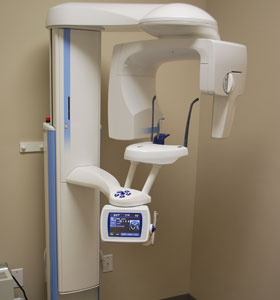Small X-Rays that accommodate small mouths

Small X-rays that accommodate small mouths are typically call “kids intraoral X-rays.” They are designed specifically for children’s smaller mouths, using smaller film or digital sensors that are more comfortable for children to tolerate. In our office, we use an X-ray machine called a panoramic x-ray machine, however we like to call it the spaceship! This x-ray machine is specifically designed for children since the child just has to keep their head still while the spaceship orbits around the child’s head taking a X-ray photo. Kids dental X-rays can provide valuable information for dentists to detect tooth decay, identify any developmental problems, and monitor the growth and eruption of new teeth.
FAQ
Why are dental x-rays necessary for children’s teeth?
According to the American Academy of Pediatric Dentistry, “radiographs are valuable aids in the oral health care of infants, children [and] adolescents” (AAPD, 2021). The academy also reports that radiographs “are used to diagnose and monitor oral diseases, evaluate dentoalveolar trauma, as well as monitor dentofacial development and the progress of therapy” and are used to “substantiate a clinical diagnosis and guide the practitioner in making an informed decision that will affect patient care” (AAPD, 2021). As you see, x-rays are crucial in the diagnosis and treatment of pediatric oral health!
Are dental x-rays safe for children?
- Yes, according to the American Academy of Pediatric Dentistry: “Even though radiation exposure from dental radiographs is low, once a decision to obtain radiographs is made, it is the dentist’s responsibility to follow the ALARA principle to minimize the patient’s exposure.”
At what age should children start getting dental x-rays?
According to the American Academy of Pediatric Dentistry: “The recommendations in the ADA/FDA guidelines were developed to serve as an adjunct to the dentist’s professional judgment. The timing of the initial radiographic examination should not be based upon the patient’s age, but upon each child’s individual circumstances.”
At SmileTown: Just Kids Dentistry, our doctors will determine the need for X-Rays based on your childs’ individual circumstance.
How often should children have dental x-rays?
The frequency of dental x-rays depends on the child’s oral health, age, and the amount of dental problems they may have. Generally, x-rays are recommended every 6 to 12 months for monitoring dental development and detecting cavities.
What types of dental x-rays are commonly used for children?
Common types of dental x-rays for children include bitewing x-rays (to check for cavities between teeth), periapical x-rays (to examine root structure), and panoramic x-rays (to view all teeth, jaws, and surrounding structures).
Do dental x-rays require special preparation for children?
There is no special preparation for a child to receive dental x-rays. The only preparation is to remove any jewelry or metal objects that may interfere with the x-ray image.
How can parents ensure their child's safety during dental x-rays?
Parents can ensure safety by discussing any concerns with the dentist or dental assistant. Ensuring the child remains still during the x-ray process helps obtain clear images efficiently and effectively.
Can dental x-rays diagnose other oral conditions besides cavities?
Yes, dental x-rays can detect other oral health issues such as bone infections, cysts, developmental abnormalities, and impacted teeth in children.

